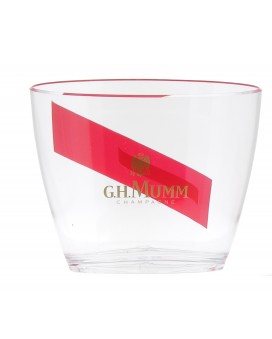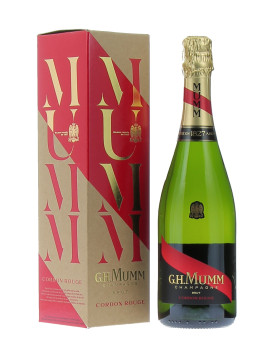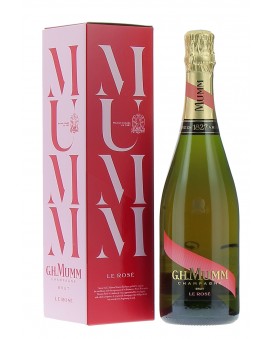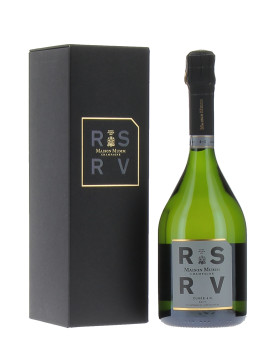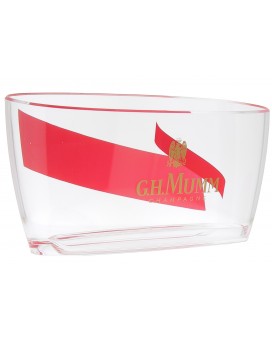- Abelé 1757
- Agrapart
- Alfred Gratien
- Apollonis
- AR Lenoble
- Armand de Brignac
- Ayala
- Barons de Rothschild
- Beaumont des Crayères
- Benoît Lahaye
- Bergeronneau Marion
- Besserat De Bellefon
- Billecart - Salmon
- Blin
- Bollinger
- Bruno Paillard
- Canard Duchene
- Castelnau
- Cattier
- Charles Collin
- Charles Heidsieck
- Chartogne-Taillet
- Chassenay d'Arce
- De Saint Gall
- De Sousa
- De Venoge
- Delamotte
- Demoiselle
- Deutz
- Devaux
- Diamant Vranken
- Dom Perignon
- Drappier
- Duval - Leroy
- Egly-Ouriet
- Epc
- Fleury
- Gosset
- Heidsieck & Co Monopole
- Henri Giraud
- Henriot
- Jacquart
- Jacquesson
- Jean-Noel Haton
- Joseph Perrier
- Konrat
- Krug
- Lafitte
- Laherte
- Lallier
- Lanson
- Larmandier-Bernier
- Laurent-Perrier
- Leclerc Briant
- Lombard
- Mailly Grand Cru
- Moet Et Chandon
- Montaudon
- Moussé Fils
- Mumm
- Napoleon
- Nicolas Feuillatte
- Pannier
- Paul Goerg
- Perrier Jouet
- Philipponnat
- Pierre Gimonnet
- Piper - Heidsieck
- Pol Roger
- Pommery
- Rare Champagne
- Louis Roederer
- Ruinart
- Salon
- Selosse
- Soutiran
- Taittinger
- Thienot
- Tsarine
- Veuve Clicquot
- Veuve Lanaud
Mumm Champagne

"Only the best" is the motto of Georges Hermann Mumm, the grandson of Peter Arnold Mumm, founder in Reims in 1827 of the great brand with the "red cord": the MUMM Champagne House.
Georges Hermann took over the reins of the company in 1852 and made it one of the most prestigious Houses in Champagne.
With nearly 8 million bottles produced per year, the house, which has belonged to the Pernod-Ricard group since 2005, offers a classic, complete and tasty range.
Discover cuvées with an immediately accessible style, dedicated to the great amateurs.
Champagne MUMM
History…
The first pages of the House of G.H.MUMM fabled winemaking history were written long before 1827, its official founding date. The Mumm family, whose lineage includes barons and knights, dates back to the twelfth century.
Already in 1761, the family had launched a business as wine producers and merchants based in Cologne, Germany under the name "P. A. Mumm", after its owner Peter Arnold Mumm. The company owned large vineyards in the Rhine valley, where it created its own wines. In the early years of the nineteenth century, Peter Arnold Mumm's three sons, Gottlieb, Jacobus and Philipp, recognised the sales potential of the outstanding sparkling wines produced in the Champagne region of France. As Germany and France enjoyed good relations at the time, the Mumm brothers made the bold decision to establish a new branch of the family company in the Champagne region, creating a branch office in Reims with the assistance of a local representative, G. Heuser. From the outset, quality was the key watchword for the partners in this new entity formed in 1827, and it has remained so for all of their successors. This approach would be encapsulated in the motto penned by Georges Hermann Mumm: "Only the best".
The Mumm dynasty
The von Mumms are one of Germany's most ancient noble families, tracing their ancestry back to the medieval era. It was in the eighteenth century that their history first became linked to winemaking. In 1761, Peter Arnold Mumm decided to establish a business in Cologne as a wine producer and merchant. He transmitted his passion to his sons Jacobus, Gottlieb and Philipp, who, in turn, became pioneers in the emerging French champagne industry. Crossing the border, they set up operations in Reims, officially creating their champagne House in 1827.
In 1852, Georges Hermann Mumm, a son of one of the founders, took over the reins of the company, which would henceforth be known as G.H.MUMM et Cie. In establishing the Mumm vineyards, he laid the foundations for a company strategy emphasising excellence. Open-minded and a defender of social progress, he instituted a system of prix de vertu and primes d'infortune, designed to provide economic assistance to workers disadvantaged due to age or disability. Inspired by the initial adventure of the company's founding fathers, Georges Hermann Mumm tirelessly travelled the globe, across Europe and as far away as Australia and New Zealand to market his champagnes. Already at the turn of the twentieth century, the company counted some twenty subsidiaries in the world's main markets, including the United States, Russia and Canada, but also Brazil and Peru. Georges Hermann Mumm's greatest creation was certainly the famous "Cordon Rouge" first released in 1875.
Today, it remains the symbol of quality for G.H.MUMM. The Mumm family is also recognised for its receptiveness to new ideas as well as its appetite for challenges and includes a number of celebrated figures among its members, not only those in the winemaking field. For instance, the aviator Walther von Mumm, who took part in the first tests of two monoplanes alongside Louis Blériot. Walther von Mumm was also a champion bobsledder whose four-man team competed in the 1932 Winter Olympic Games.
From vine to wine
G.H. Mumm has nearly 218 hectares of vineyards rated at 98% on the Champagne quality scale. These are mainly sited in the eight most renowned Grands Crus in Champagne: Aÿ, Bouzy, Ambonnay, Verzy, Verzenay, Avize, Cramant and Mailly-Champagne. These holdings cover 25% of G.H. Mumm’s production needs. The remaining 75% comes from independent growers with whom the company has developed strong ties. This combination of its own vineyards and external supply enables the House of G.H. Mumm to maintain a consistent style and continue its philosophy of close scrutiny over grape quality. At G.H. Mumm, the chef de cave can call on raw material of the very best quality from a range of sources.
Pruning
Of all the commercially grown plants, the vine is without doubt the most sensitive to its environment. It requires constant care. Pruning begins around six weeks after the grape harvest to provide more mature grapes and thus better quality wine. The work continues until March. From mid-March to the start of May, the vine shoots are attached to, and trained along, wires to "discipline the vine".
Budding
Around mid-April, the vines come into bud. The young green shoots will have to withstand the spring frosts which, in some years, can cause significant damage. Bud selection takes place in May and June, after the first buds have appeared. This is a period of long, patient observation, during which the most promising shoots are individually selected and the others eliminated. The shoots thus chosen will grow more vigorously.
Flowering
The flowering is a capricious and demanding process that usually lasts 12 days or so in June. G.H. Mumm’s own growers keep a careful watch during this difficult stage, as cold or damp weather can endanger the harvest and cause substantial losses through the vines’ failure to set fruit or through uneven fruit formation. In summer the vines are tied and topped, their leaves being thinned out to allow the sunlight to reach the fruit more easily. In September the harvest comes round again.
The environment
To yield high-quality grapes, the vines need protection against the various diseases and pests from which they can suffer – insects, grape caterpillars, mildew, oidium and rot. While putting in place such protection, G.H. Mumm is careful to limit the use of remedies to ensure the maintenance of vine quality doesn’t compromise the environment.
Grape picking
Usually, the grapes are picked between the end of September and mid-October, around 100 days after the vines have flowered. This is when the grapes are ripest. As required by the Champagne appellation rules, picking is exclusively by hand, vineyard parcel by vineyard parcel, bunch by bunch. For about three weeks, the House of G.H. Mumm employs approximately 1,000 grape pickers.
Pressing
The grapes are pressed, with only their juice collected during the process. Care must be taken not to apply too much pressure, as this could result in the grape skins and their pigments coming into contact with the juice. From the 1840s, G.H. Mumm built press houses close to the vineyards, a practice that continued until around 1910. The company recognised that pressing the grapes soon after picking reduced the risk of damage from the long journey to the winery or from the weather. A whole year’s work in the vineyards could be lost all too easily. Today, the House of G.H. Mumm still has seven traditional presses from that time, known as ‘Coquard presses’, near its vineyard holdings.
Racking
After pressing, the grape juice must have any organic residue, pips or skins from the grapes and any vineyard soil removed. This is known as “racking”. The grape juice is left in vats at a temperature of 10-15°C for about 16-18 hours. Any particles fall to the bottom by the action of gravity. The resulting clear juice, or “must”, is then moved to G.H. Mumm’s vinification vats.
Fermenting more than once.
After pressing, the must is stored in vats for about two weeks at between 18 and 20°C for the alcoholic fermentation process. Natural yeasts convert the sugar in the must into alcohol and carbon dioxide, turning the must into wine. G.H. Mumm is careful to keep apart the different crus and grape varieties, ensuring the character of each terroir is preserved until blending. The company has always allowed a second fermentation, known as the malolactic fermentation, to occur. This is a natural process during which the malic acid turns into lactic acid, reducing acidity and making the wines softer. This second fermentation is optional, rather than a requirement of the Champagne appellation rules. The malolactic fermentation directly affects the style of G.H. Mumm’s wines, leaving them softer without making them any less fresh or lively.
Clarifying
Following the fermentations, the wines are transferred to other vats to remove any remaining yeast or solids that could affect the taste. The wines are called "still wines" after clarifying, as they have yet to acquire their sparkle.
Blending
Blending involves the art of combining still wines of different grapes and growths to create champagnes of consistently high quality that reflect the house style of G.H. Mumm. This subtle art is considered the "signature" of any champagne house and its chef de caves. To reach the blending stage, around 2,000 samples are tasted, noted and memorised every year by chef de caves Didier Mariotti and his team of expert winemakers. Up to 77 different crus go into the Cordon Rouge blend each year. To ensure G.H. Mumm's champagnes retain their usual depth and freshness year after year, reserve wines are carefully kept. These help soften any contrast between the different years’ wines during blending. In certain years when the harvest is exceptionally good, the chef de caves may decide to create a vintage, for which only wines of that year may be blended.
Bottle fermentation
The still wine becomes champagne while hidden in the depths of G.H. Mumm's cellars. The liqueur de tirage triggers a second alcoholic fermentation. Over the course of a month, at a constant temperature of 11°C, bubbles gradually form. This is how the wine becomes sparkling. Its alcoholic strength increases from 11 to 12 %. The quality of this fermentation will determine how gentle is the sparkle of G.H. Mumm's champagnes, as well as their degree of freshness and depth. As the bubbles are formed, so the pressure inside the bottle increases, reaching as much as 6 Bar.
Maturation
The bottles are stored on their sides in G.H. Mumm’s cellars. Dug by hand out of the chalk, these cellars comprise 25 km of galleries in total, taking 70 years to excavate. Today, they house nearly 25 million bottles. Over many months, the wines develop their richness of taste and aromatic complexity. During the ageing process, the yeast forms a deposit in the bottle. It’s through contact with this deposit that the wine acquires its rich taste and distinctive character. The winemaking team prefers to age the champagnes for longer than the legal minimum to create wines of perfect maturity. This means two and a half years for Cordon Rouge instead of 18 months, and almost five years for vintage champagnes rather than three years. Another instance of the quality of G.H. Mumm champagne.
Dosage
A liqueur de dosage, made from a mixture of cane sugar and old G.H. Mumm champagne, is added to the wine. An integral part of the company’s expertise, the exact composition of the various formulas of liqueurs de dosage is a secret known only to the chef de caves. The proportion of sugar added dictates the style of champagne produced – Brut or Extra-Brut, Sec or Demi-Sec. The liqueur used at G.H. Mumm is drier than most. At between 6 and 9 grams per litre, instead of the usual 12 grams for a Brut champagne, it allows the full subtlety of the blend to come through. Finally, Didier Mariotti insists that all champagnes be left to rest before shipping, thereby letting the liqueur blend properly with the wine.
In 1870 G.H. Mumm built its own with a research laboratory to further its understanding of bottle fermentation. Since then, the company has constantly developed its expertise in order to offer champagnes of consistently high quality. "Only the best" was Georges Hermann de Mumm’s maxim. To this end, the House of G.H.Mumm has been working with national scientific research bodies such as the INRA and CNRS, as well as Météo France, to develop new procedures, many protected by patents. G.H.Mumm's researchers investigate the importance of the terroir to champagne production, combating adverse weather conditions and improving fruit quality, among other subjects, in their constant quest for excellence. G.H.Mumm has also achieved ISO 9001 certification for its quality management systems.
Trusted Reviews
97% of satisfied customers Shipping 24H
Order before 11AM Gift Message
free + 1200 références
in stock Storage
Hydro-regulated Secure Payment
Credit Card, Amex, Paypal, Bank transfer 





